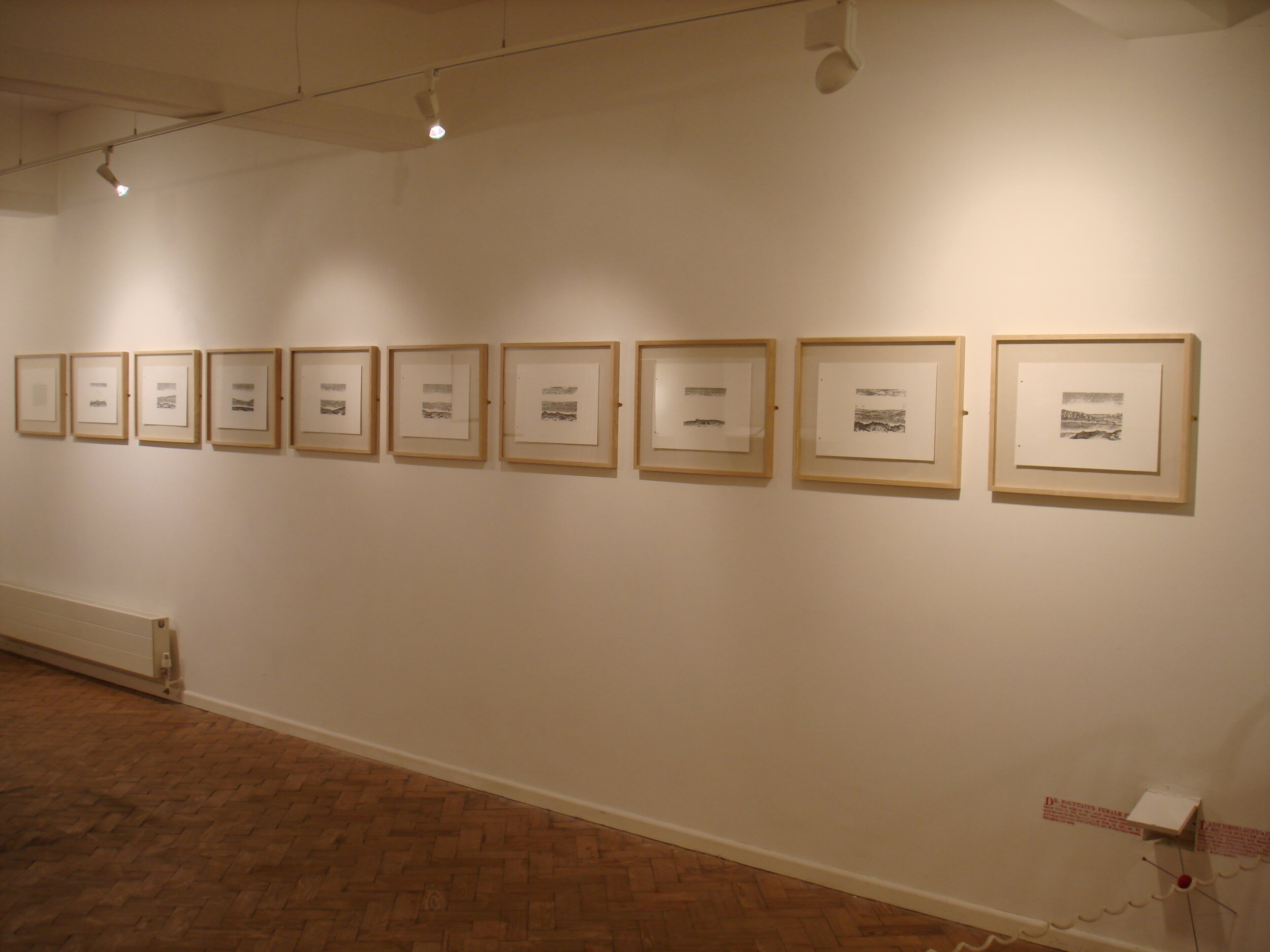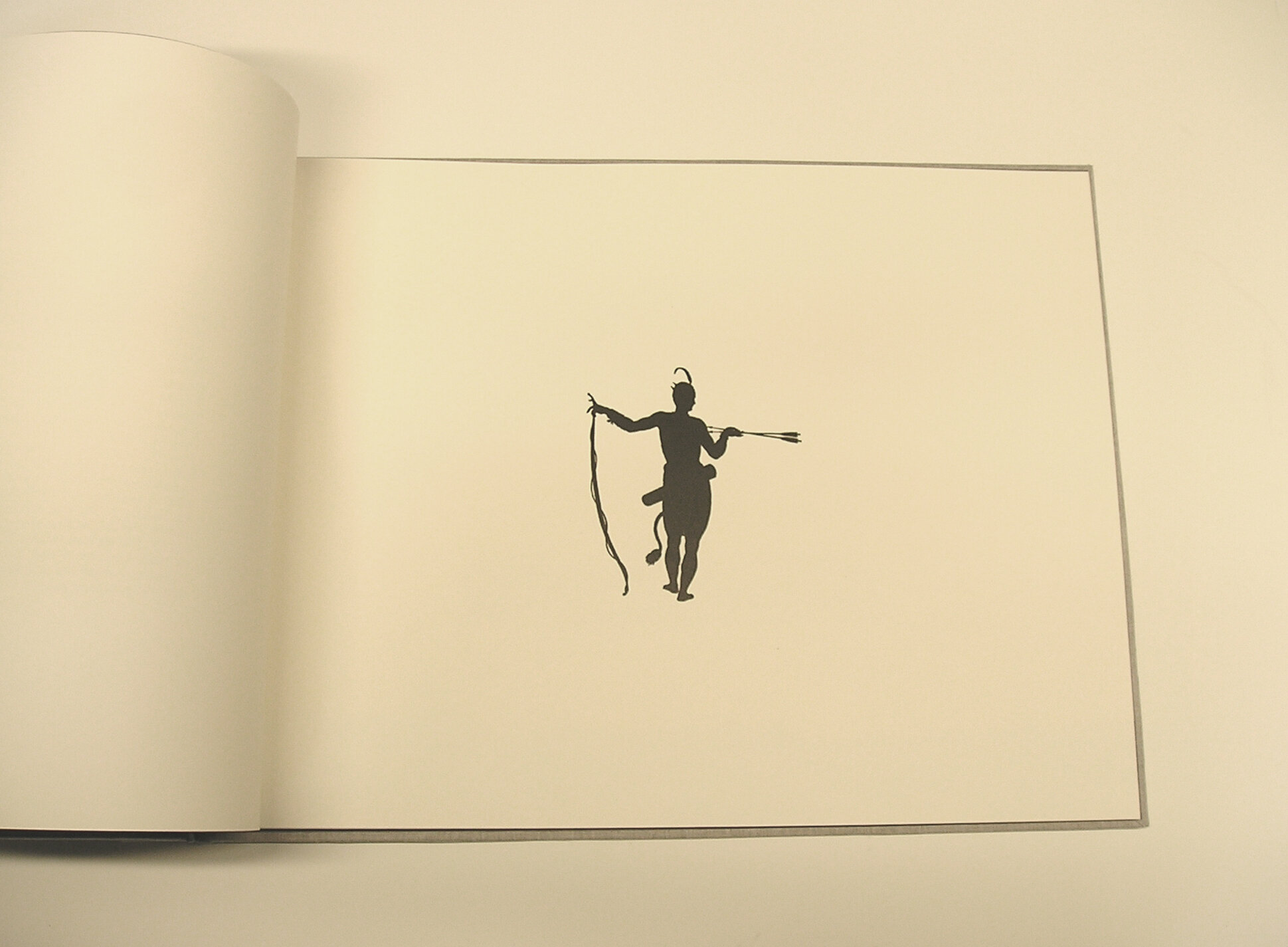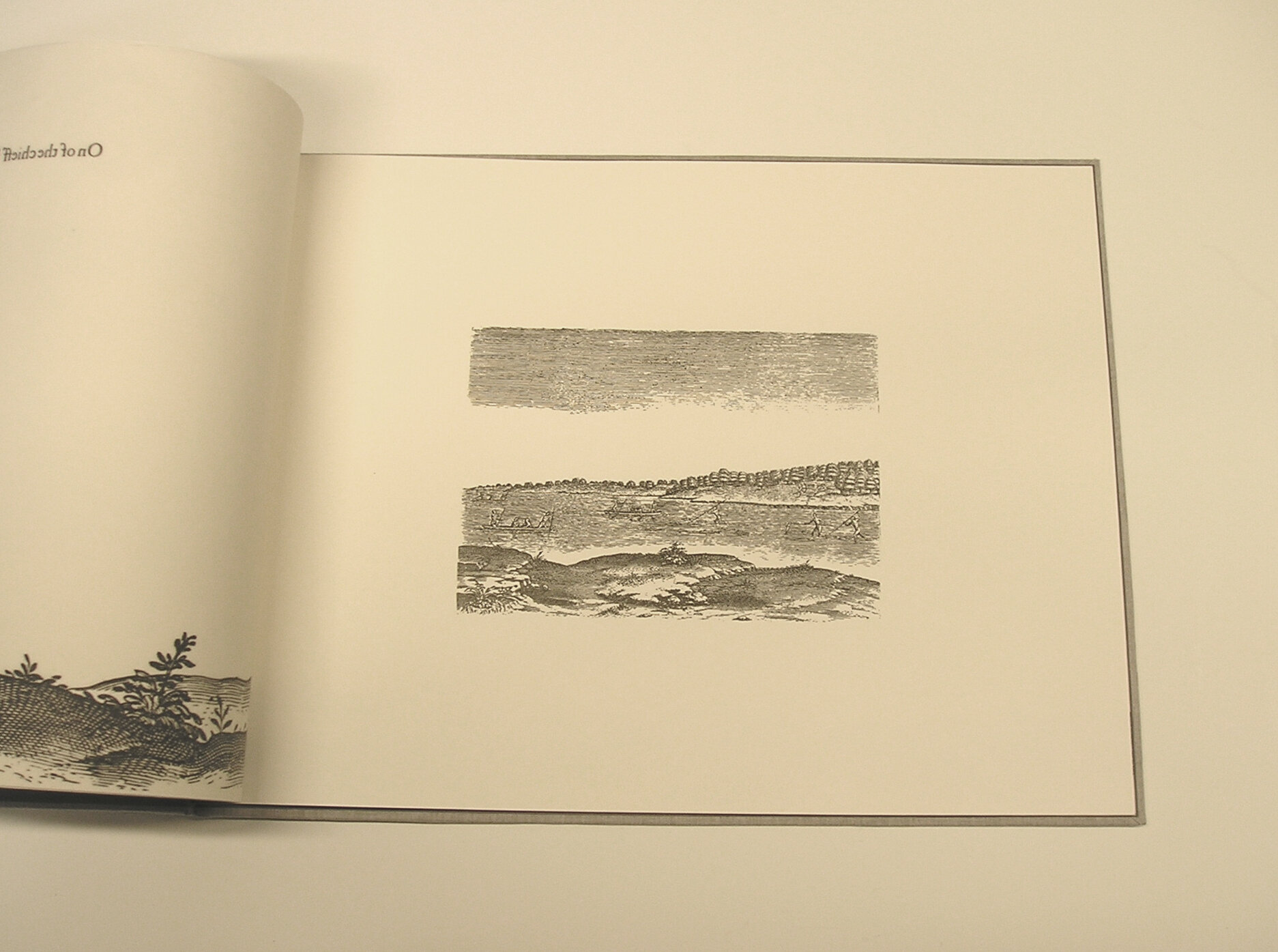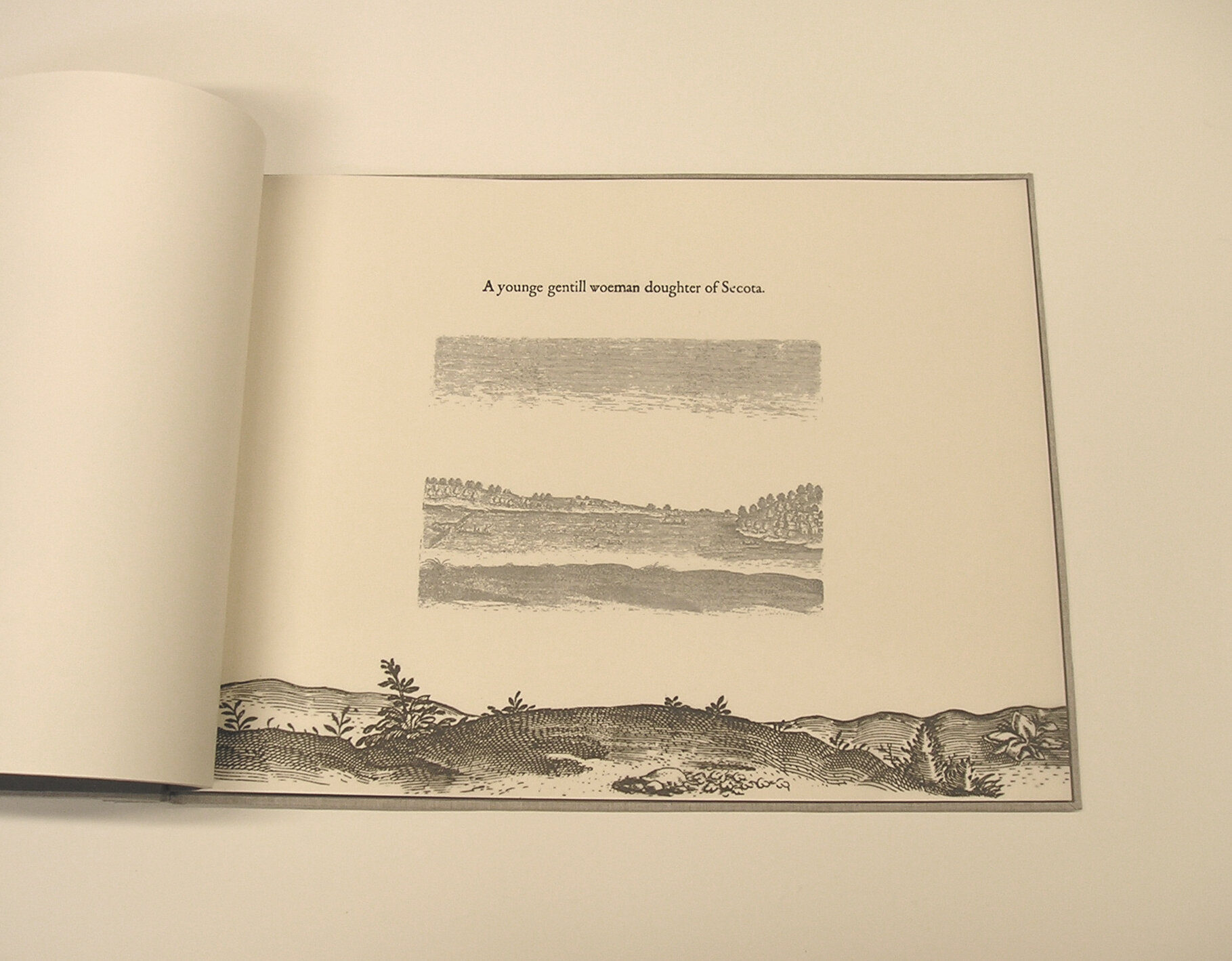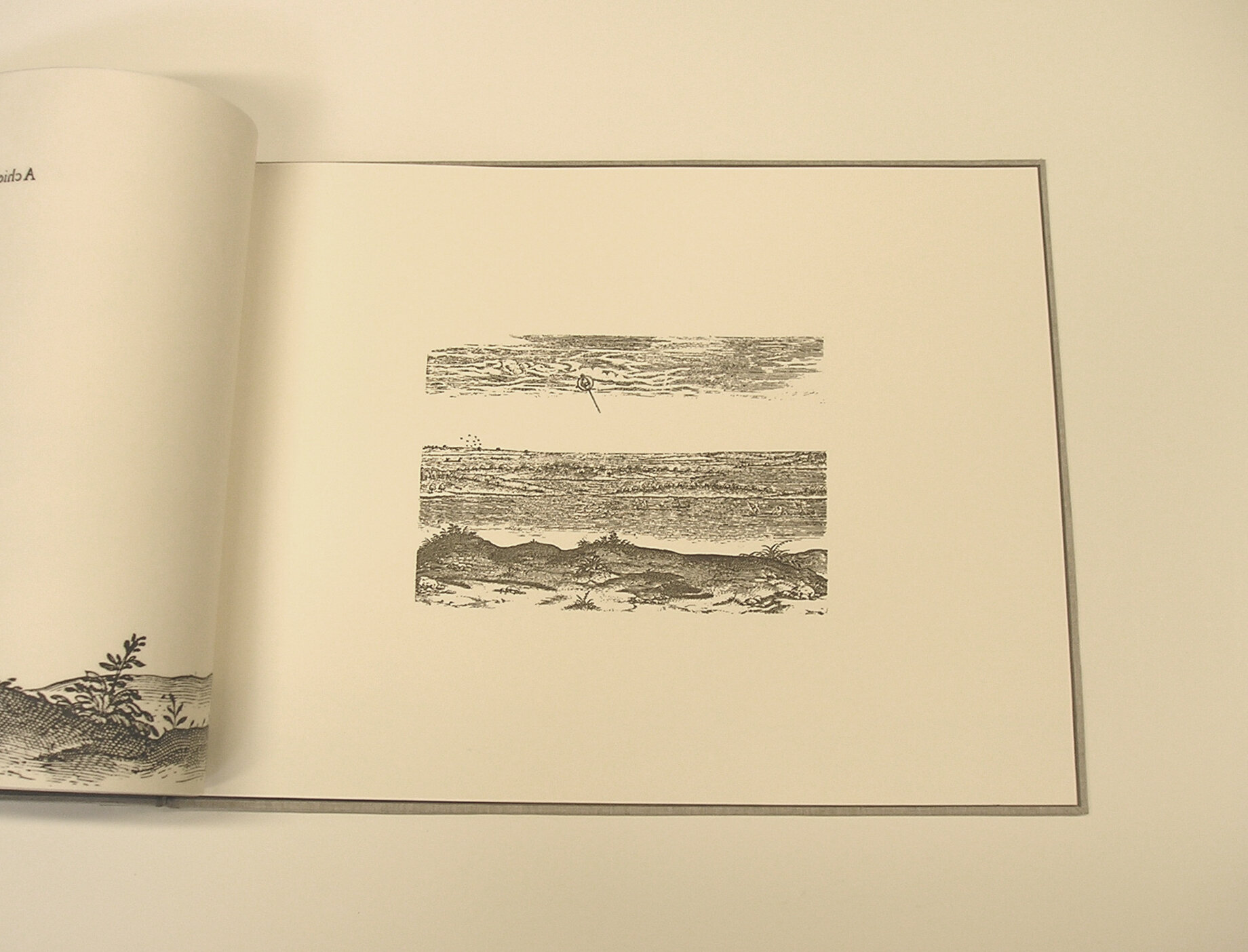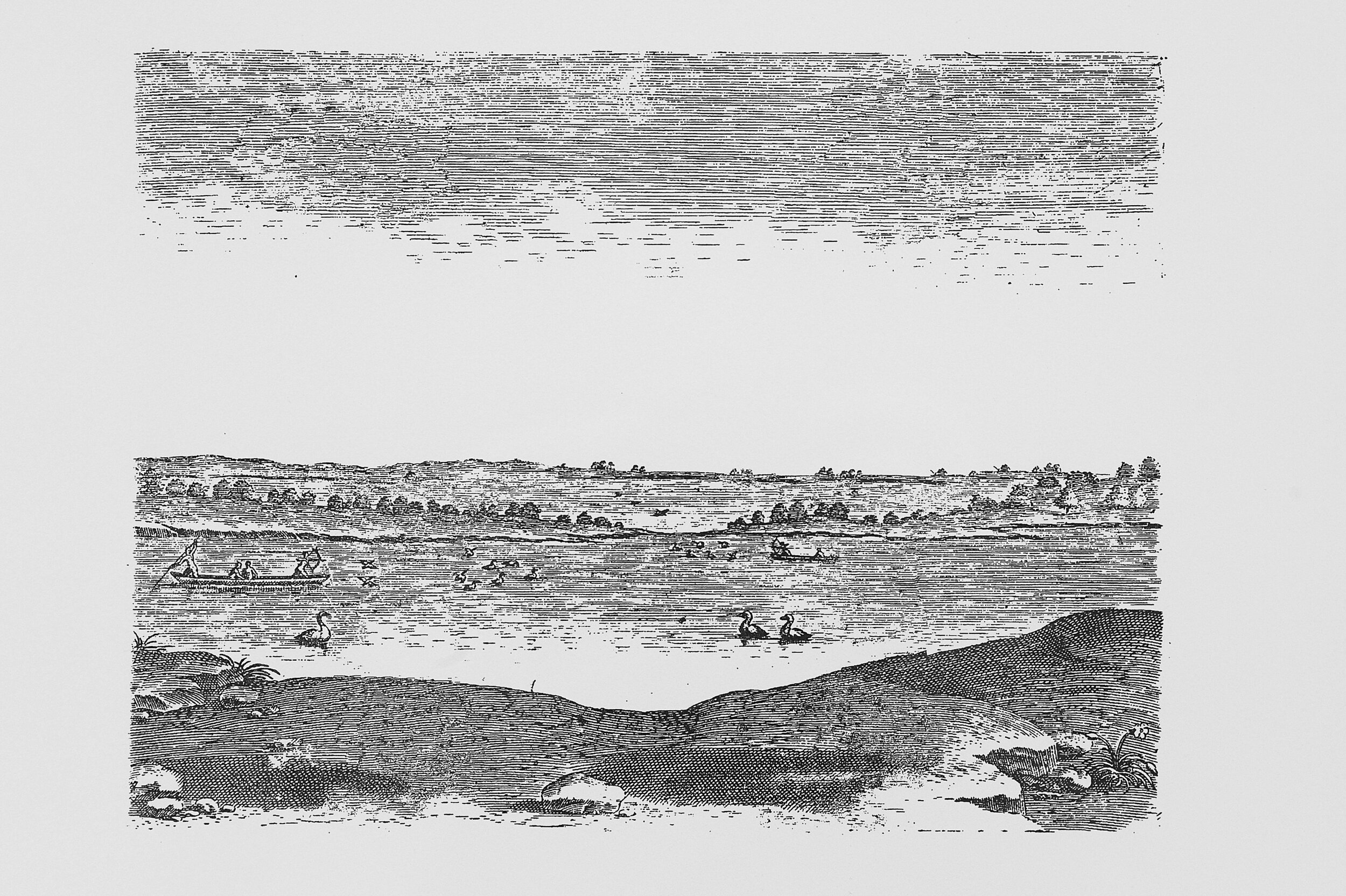
Briefe and True
Briefe and True, Lost Landscapes
2005
Media: off-set lithography in bound ‘folio’ (23 pages)
Size: (folio) 435 x 310 x 10mm. (framed version—10 plates) 600 x 480mm each
Exhibited:
2014 – Unnatural Causes (one-person exhibition), O3 Gallery, Oxford,
2013 – SOLO (one-person exhibition) Cuculus Prospectus, Waterfront Gallery, UCS, and Ipswich Museum, Suffolk.
2011 – Cuculus Prospectus (one-person exhibition), Beldam Gallery, Brunel University.
2008 – Locations (one-person exhibition), OVADA, Oxford.
-
This work was conceived during visits to the Outer Banks of North Carolina, USA, during 1999, 2001 and 2002. Visits to Fort Raleigh National Park on Roanoke Island—the supposed original site of Walter Raleigh’s infamous ‘Lost Colony’—stimulated an ongoing fascination with North Carolina’s colonial history and its relationship to the unique coastline, topography and ecology of the area, which are central to Briefe and True: Lost Landscapes.
Between 1584 and 1590 English voyages were made to Virginia (now coastal North Carolina) in an attempt to further the Elizabethan expansion and colonisation of the New World. In 1585, during an expedition backed by Sir Walter Raleigh, Thomas Harriot and the artist John White made a scientific study of the plants, animals, inhabitants and minerals of the area. White’s watercolour studies included images of the native Algonquian peoples of Virginia. In 1590, Harriot published the findings of their study in his illustrated A Briefe and True Report of the New Found Land of Virginia which contained engravings by Theodor de Bry copied from White’s watercolours of the native Algonquians. Close examination of these related images reveals that the figures in De Bry’s copies differ from White’s originals in many respects. White’s images were themselves filtered through European conventions of image making. However, De Bry’s figures are, by comparison, highly and explicitly Europeanised and mannerist. Some hold or wear added objects (shoes, arrows, a rattle) and all are placed in landscape settings that are not in White’s original work.
These differences and the potential for exploration of concepts of ‘inaccuracy’ and thereby ‘invention’ in and between conventions of representation held my attention and stimulated the creation of Briefe and True: Lost Landscapes. De Bry had not visited the New World and there were no other contemporary European images of the terrain and vegetation of Virginia for him to use as a guide. Although evidence is incomplete, it seems likely that the landscapes of De Bry were indeed probably imagined or adapted from other sources, with his depictions of vegetation based on European pictorial conventions, and topographical information of the New World reliant solely on description. Both geographically specific terrain and vegetation are notably absent from White’s surviving watercolours.
In Briefe and True: Lost Landscapes, I digitally removed the figures from De Bry’s ‘landscapes’, leaving only the visual information not found in White’s original drawings including the landscape settings and additional objects and shadows on the ground where each figure stood. What remains reveal De Bry’s additions as residues of Old and New World hybridity. They are made to frustrate through the ‘redaction’ of their central focus (the Algonquians) and act to emphasise the pre-colonising ‘hybridity’ of De Bry’s engravings as well as mobilising ‘presence in absentia’ as a reflective strategy. Absence and loss characterise the history of the site of Harriot and White’s study. European expansion displaced the native Algonquians of coastal North Carolina and little material evidence of their 16th century culture survives. The 117 English settlers sent to Virginia by Sir Walter Raleigh in 1587 (with John White as their Governor) had famously disappeared by 1590 (The Lost Colony). Further, the Coast of North Carolina has been regularly and subtly reshaped over 400 years of annual Atlantic hurricanes.
The form of this work encodes transformation and hybridity. Printed using offset lithography and bound with book screws, it is designed to function as either a bound ‘folio’ or a series of independent removable prints. The ‘Landscape’ plates (9 in all) are designed so that it is possible for the form of the work to change from book-based to wall-based work and vice versa. In this sense the work has its own hybridity, made evident through a mixture of traditional printing, digital technological processes, and differing possibilities for dissemination and/or display.
